Is Pakistan Safe for Female Travelers? Ah, the million-dollar question. And like most million-dollar questions, the answer isn’t a simple yes or no.
Born and raised in Pakistan, I’ve seen the best and worst of it firsthand. As a local woman, I won’t sugarcoat it—this country can be unsettling in ways that outsiders will never fully grasp. The harsh truth? Women who live here face the brunt of the worst injustices.
But if you’re a foreign traveler? Your experience will be vastly different. Expect warm hospitality, constant curiosity, and a surprising level of preferential treatment. In many ways, you’ll be seen as an honored guest—doors will open for you (sometimes literally, with an unnecessary amount of insistence).
That said, not all of Pakistan is the same. Some regions feel safer than others, and your experience will depend on where you go, how you navigate social norms, and how well you adapt to the cultural landscape. Despite the challenges, I still rank some parts of Pakistan among my absolute favorite places on earth. This is a country of paradoxes—harsh yet breathtaking, frustrating yet deeply rewarding.This post is my honest, no-BS take on what female travelers can expect in Pakistan: the good, the bad, and the seriously, why is everyone staring at me? moments.
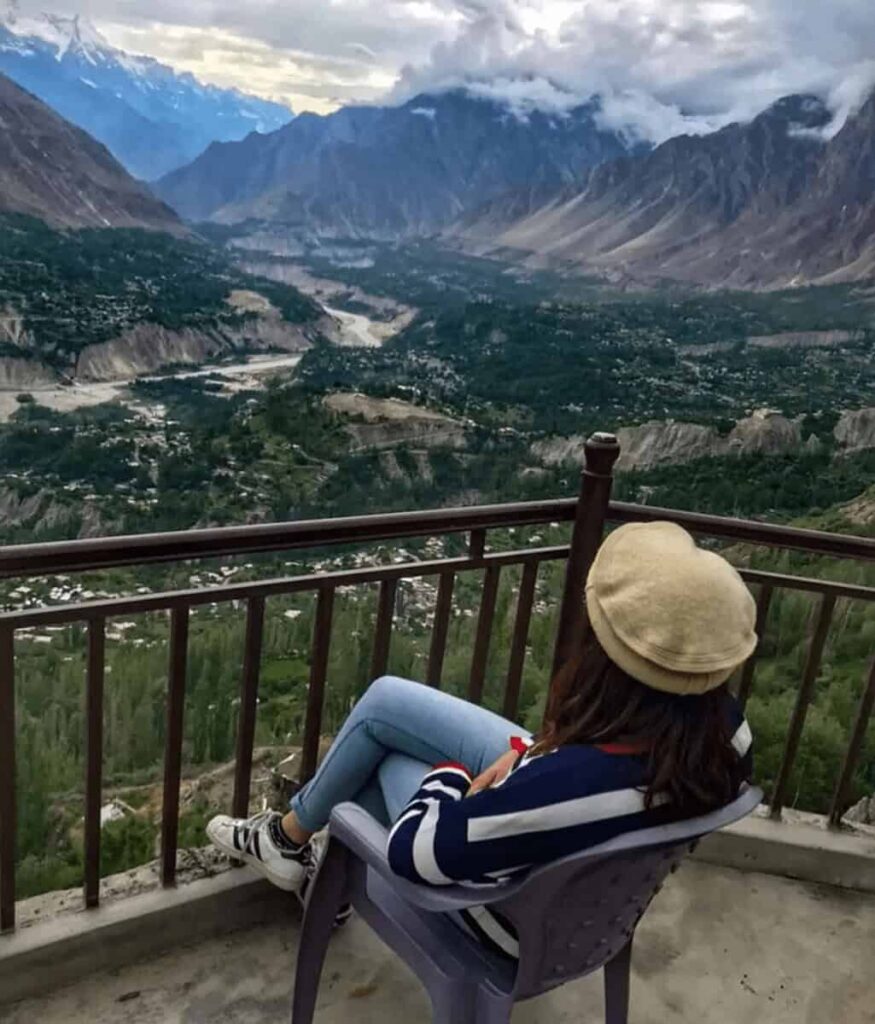
The Real Deal on Pakistan’s Safety: Media Hype vs. Reality
Pakistan exists in two wildly different narratives. Turn on the news, and you’d think Pakistan is on the brink of collapse at any given moment. Political instability, militant groups, tense relations with India and Iran—it’s all dramatic, all the time. And while yes, the country has faced serious challenges, the reality is far more nuanced. Millions of people live, work, and travel here daily without incident. You don’t see breaking news about a normal day in Lahore, because “woman safely enjoys a cup of chai” doesn’t make headlines.
Then there’s the other extreme: the Instagram version of Pakistan. In these dreamy, golden-hour snapshots, it’s all snow-capped peaks, stunning forts, and impossibly kind locals inviting travelers in for home-cooked meals. None of this is false—Pakistan is genuinely beautiful, and the hospitality is unmatched—but these pictures don’t tell the whole story. They don’t show the complicated gender dynamics, the occasional unwanted attention, or the very real struggles local women face every day.
What It’s Actually Like: My Experience as a Woman in Pakistan
Pakistan can be frustrating, unpredictable, and yes, at times, unnerving—but it can also be the most wonderful hospitality you have ever felt. I’ve had experiences on both ends of the spectrum.
There are moments when Pakistan feels safer than expected. When I traveled alone with my mother, complete strangers went out of their way to ensure we were comfortable, safe, and never overcharged. But then there are times when reality hits hard—like when I found myself stranded on public transport in the middle of nowhere, completely at the mercy of strangers. (Spoiler: I made it out fine, but not without a solid dose of anxiety. You can read the full saga here.)
This dichotomy between media narratives and real-life experiences can be misleading. If you’re traveling as a foreign woman, you’ll likely receive a level of protection and kindness that local women rarely experience. But that doesn’t mean you can throw caution to the wind. The key to traveling safely here? Being aware of the risks, prepared for cultural differences, and keeping both eyes open.
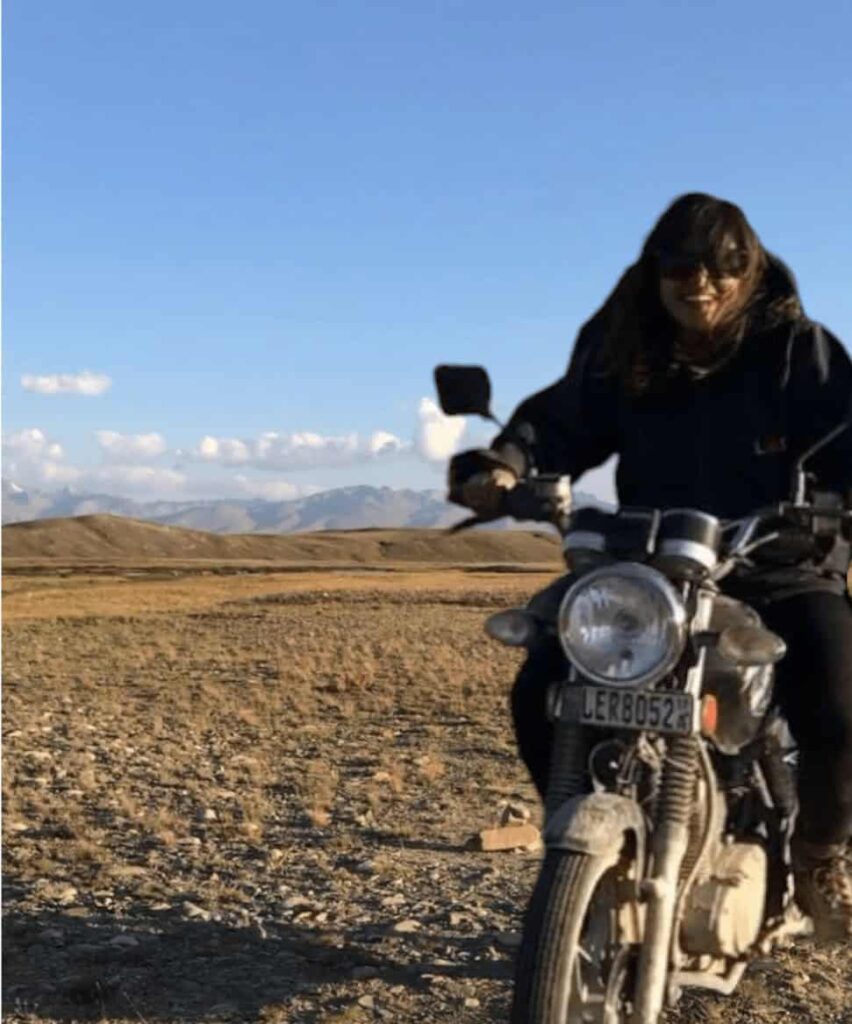
Pakistan’s Regions: The Good, The Bad, and The Risky
How safe you feel as a female traveler in Pakistan depends entirely on where you’re headed. It’s a massive country with a mix of cultures, customs, and safety levels. Some places are incredibly welcoming and easy to navigate, while others—I’d want you to steer clear of. Here’s a very rough breakdown of which regions to explore and which to avoid.
High-Risk Areas
Balochistan
I won’t lie—Balochistan is one of the most stunning, culturally rich, and historically significant parts of Pakistan. It’s also one of the most politically troubled. The province has been fighting for autonomy for decades, and the situation is complicated, heartbreaking, and unfair. Many Baloch people feel like second-class citizens in their own land, and their grievances run deep.
For travelers, this means you’re unlikely to get a permit to visit at all. Foreigners are heavily restricted, and for good reason—there’s a risk of kidnappings, targeted violence, and military crackdowns. Even if you could go, you wouldn’t be able to move freely without a government escort, and that kind of monitored travel is hardly worth the hassle.
Khyber Pakhtunkhwa
This is the wild west of Pakistan—literally. The areas along the Afghan border have a long history of violence, Taliban control, and instability. While Khyber Pakhtunkhwa (KPK) as a whole is stunning, large parts of it are just not safe for travel.
Some districts, like North and South Waziristan, remain tense, and even locals hesitate to travel there without good reason. The tribal areas were once entirely off-limits to foreigners, and while restrictions have eased, it’s not the kind of place where you want to test your luck.
Azad Kashmir
Azad Kashmir is drop-dead gorgeous but politically fragile. This region sits along the Line of Control (LoC) with India, and cross-border shelling is a very real risk. It’s not uncommon for tensions to flare up overnight, making it an unpredictable place to visit.While some areas of Azad Kashmir are open for tourism (like Muzaffarabad and Neelum Valley), anything too close to the border is off limits.
Bottom Line: You’re not going to stumble into these areas by accident. Tourists are generally not allowed here, so you don’t have to stress about making a wrong turn and ending up in a ‘conflict’ zone.
Azad Kashmir is another area to avoid, especially around the border with India.
All of these high risk areas are generally closed off for tourists so you don’t have to worry about accidentally ending up there.
More Conservative Areas
Some places in Pakistan are generally safe, but I’d still think twice before visiting as a solo female traveler. Most of Khyber Pakhtunkhwa (KPK) and the Kohistan area fall into this category. These regions are incredibly traditional with strict social norms that limit women’s visibility in public spaces. When I used to take road trips up north, I’d keep a large shawl handy to wrap over my track pants whenever I had to step out of the vehicle in public spaces. It’s a small adjustment that makes a big difference. In these areas female participation in public life is minimal—and that’s saying a lot considering even Pakistan’s big cities aren’t exactly overflowing with women on the streets.
Swat Valley is often called the “Switzerland of Pakistan” for its stunning landscapes and snow-capped peaks. It’s a place that feels like a fairy tale, but it also has a dark history. It was once Taliban territory, and the memories of that time are still fresh. Malala Yousufzai, education activist, is from here—and she was shot in Swat by the Taliban. Today, Swat is safe for tourists, and I’ve had amazing experiences there. But the region remains conservative, and you’ll see very few local women in public.
The key to exploring these more conservative regions is to blend in. Dress modestly in local clothes (more on that later), and avoid drawing too much attention to yourself. It’s not about conforming but about navigating with awareness. These are not the places you want to make a ‘woke’ statement.
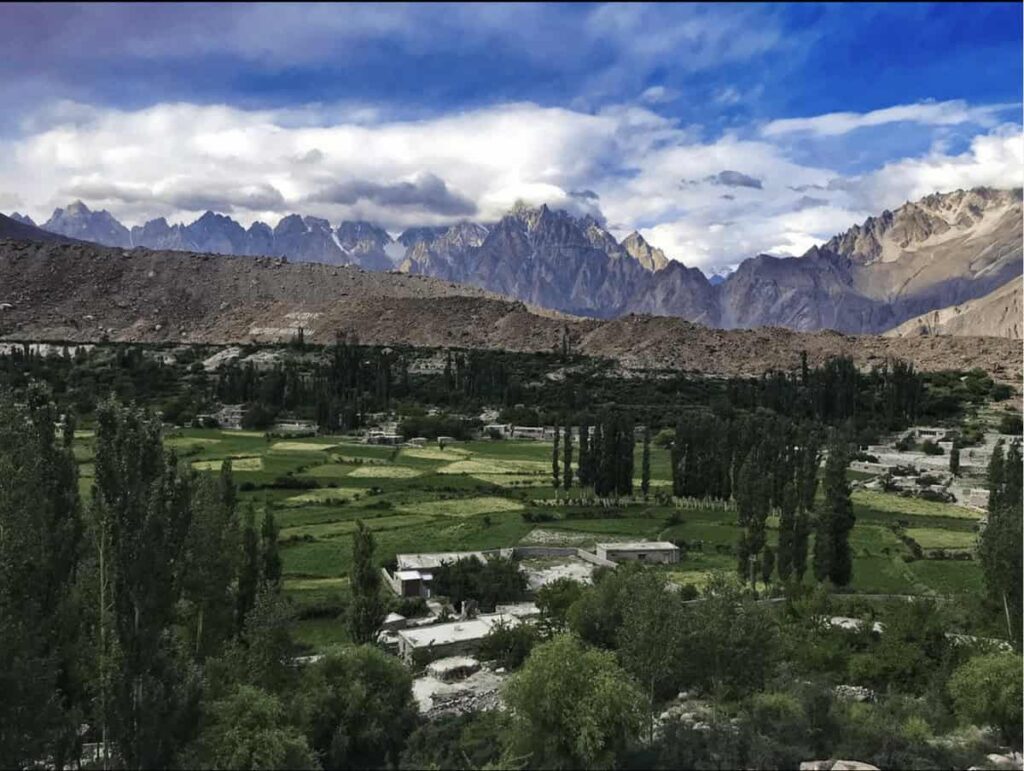
Safe Regions for Women: Where You Can Relax (ish)
Islamabad
The capital is modern, clean, and organized,. You can wander around freely, take an Uber alone, and even sit at a café without drawing much attention. If you’re looking for an easy, hassle-free introduction to Pakistan, start in Islamabad. There are plenty of activities to keep you occupied; check out my list of things to do in Islamabad if you’re planning to stay a while.
Lahore
Lahore is where history meets modernity. It’s chaotic and noisy, but it’s also full of life. The more liberal neighborhoods (like Gulberg and DHA) are great for female travelers, with cafes, bookstores, and restaurants where you’ll see local women out and about. But venture too deep into the Old City, and you’ll feel the difference—more conservative crowds, more stares, and more unwanted attention.
If you’re planning to explore, consider taking some day trips around Lahore to experience the region beyond the city’s hustle and bustle.
Gilgit-Baltistan
If you’re a female traveler in Pakistan, this is where you want to be. Hunza is hands-down the best place for solo female travelers. The people, mostly Ismailis, are progressive, educated, and used to seeing foreigners. Women are more visible and active in public life, the crime rate is near zero and you’ll meet the nicest people you have ever met.
I’ve traveled through Hunza, Phander, and Skardu without issue, and it’s one of the few places in Pakistan where I felt truly free.
Chitral & Kalash
Upper Chitral and the Kalash Valleys are part of KPK (which I just told you to avoid), but these areas are different.
The Kalasha people have a distinct culture, and their valleys feel like a world of their own. Women are visible, active in society, and treated with respect. I felt welcomed, safe, and endlessly fascinated by this place.
Karachi
Karachi has a bad reputation, but it’s mostly overblown. Yes, there’s petty crime, and yes, you should keep your phone tucked away in crowded areas, but in terms of actual danger? I wouldn’t consider it unsafe.
Karachi is huge, loud, and unpredictable, but it’s also Pakistan’s most diverse and liberal city. It’s a place where you can see women working, eating out alone, and living relatively freely compared to other cities.
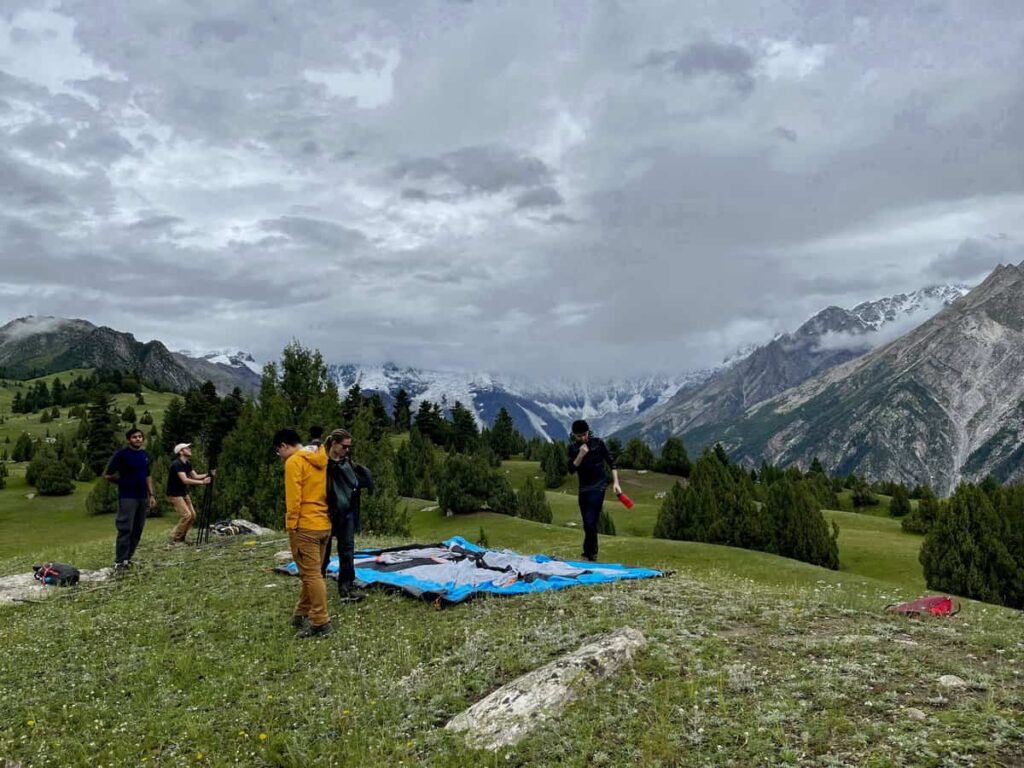
Social Norms 101: What Women Travelers Should Know
Dress Code
In Pakistan, there’s no legally enforced dress code like in Iran, but cultural norms are powerful, and they shape how you’ll be perceived as a woman traveler. Most women wear shalwar kameez—a traditional outfit with a long tunic (kameez) and loose trousers (shalwar). In conservative areas, women often pair this with a chaddar or shawl for added modesty.
In major cities like Lahore, Islamabad, and Karachi, the dress code varies by neighborhood. In wealthier areas, you’ll see women in jeans and Western attire—a lingering effect of colonization and Western influence. But in more conservative districts, shalwar kameez is the norm, and revealing clothing will attract unwanted attention.
No matter where you are, it’s smart to cover your knees and shoulders at a minimum. In more conservative regions, opt for long sleeves, loose-fitting clothes, and always keep a scarf handy—even if you don’t need to wear it all the time, it’s useful for visiting religious sites or blending in.
Navigating in Public Spaces
Pakistan is a deeply male-dominated society, and this is reflected in public spaces where men are far more visible than women. Women are often confined to the home, leaving the streets and public areas predominantly male. As a foreign female, navigating these spaces requires sensitivity to local norms and an understanding that public spaces aren’t designed with women in mind.
Here’s the kicker: If you’re white, Pakistani society will be much more forgiving of your behavior. They’ll see you as a foreigner who doesn’t know better, so you’ll get a pass on things that would be heavily judged if a local woman did them. That doesn’t mean you should be careless—it just means you’ve got more wiggle room.
- Cover your head in religious places. It’s a sign of respect and makes you stand out less.
- Sit in “family” areas of restaurants and dhabas (roadside eateries).
- Avoid smoking publicly. In Pakistan, smoking is often associated with “loose morals” for women. It’s unfair, but it’s the reality.
- Choose seats next to women whenever possible—especially on public transport.
- Expect staring. It’s inevitable. People are curious, and they’re not shy about it. You’ll also get questions about your marital status, and men might dominate most interactions. Just roll with it, but keep your guard up.
Interacting with Men
Pakistan is conservative when it comes to interactions between men and women. And as much as some influencers might paint a picture of Pakistan as a welcoming, carefree place, the reality is more complicated. Many men will assume that because you’re not local, you’re “immoral” and therefore open to advances. It’s not fair, but it’s the cultural stereotype.
Even after living here my entire life, I still find myself avoiding interactions with unfamiliar men whenever possible. It’s not about mistrusting everyone—it’s about not wanting to take any chances in a society where boundaries can be easily misunderstood or ignored.
- Use familial terms like “bhai” (brother) or “uncle” when addressing men. This automatically creates a social barrier that reduces the chance of misinterpretation.
- Keep a respectful distance and avoid too much smiling, which can sometimes be misread as flirting.
- Never give out personal contact details to strangers.
- Don’t be afraid to be assertive or even rude if necessary. Your safety comes first, and politeness is overrated when someone’s overstepping boundaries.
- Avoid saying you’re single or mentioning that you have a boyfriend. I know, the feminist in me hates saying this, but pretending you have a husband can save you a lot of trouble. It immediately deflects unwanted attention.
- And this one I learned very early on, but pretending I have a relative in the army always does wonders.
PDA, Relationships and Online Dating
Public displays of affection (PDA) are a no-go in Pakistan. This includes holding hands, hugging, or kissing in public. It’s considered highly inappropriate, especially if you’re an unmarried couple. Even something as simple as shaking hands between men and women is uncommon, so it’s best to wait and see if they initiate it. If you’re traveling with your partner, it’s easier to just say you’re married. It avoids awkward questions and judgmental stares.
As for online dating, I’d strongly advise against it. Pakistani men often fetishize foreign women, particularly white women, assuming they’re “easy” due to perceived moral laxity. This isn’t just annoying—it can lead to uncomfortable or even dangerous situations. Dating apps are full of men looking for hookups, and things can escalate quickly. It’s not worth the hassle or the risk. If I were you, I’d avoid it altogether.
LGBTQ+
Homosexuality is ‘technically’ illegal in Pakistan, with penalties of up to 10 years in prison. But laws don’t change people’s sexual orientation and like most things in Pakistan, the reality is complex. There’s an underground LGBTQ+ community in big cities. Behind closed doors, people live freely, but in public, discretion is key. Cross-dressing or openly displaying LGBTQ+ identity wouldn’t fly, and public affection is off-limits, but dating apps like Tinder do work if you’re curious.
Interestingly, for a country that is this homophobic, you will often see people holding hands with the same gender and being physically affectionate towards one another.
There’s also a long-standing Khwajasirah community representing transgender individuals. They’ve existed within Pakistani society for centuries, but they face significant discrimination. Historically revered during the Mughal era, they’re now marginalized and ostracized.
Alcohol and Hashish
Alcohol is illegal for Muslims in Pakistan, but foreigners can buy it at licensed hotels or clubs. Murree Brewery is the largest producer of alcoholic beverages in Pakistan, and it’s consistently profitable despite the ban—which says a lot about just how “dry” the country really is.
Hashish (charas) is also illegal but widely available, especially in the north. It’s culturally accepted in some areas but can get you into serious trouble with the authorities. And don’t think being a foreigner gets you off the hook—if anything, it makes you a target for larger bribes.
Respecting Religion
Blasphemy laws are strict, and even a perceived slight against Islam can provoke serious consequences. Avoid any discussions about atheism, critiques of Islam, or political views related to religion unless you know the person really well. It’s just not worth the risk. Respecting local religious practices isn’t just about being polite—it’s about keeping yourself safe.

Safety Tips for Solo Female Travelers in Pakistan
Accommodation Safety
Don’t skimp on accommodation in Pakistan. Safety is non-negotiable, and this is not the place to experiment with Couchsurfing. It might sound adventurous, but the risk isn’t worth it.
If your budget allows, stick to well-known hotel chains like Marriott or Serena. They’re pricier by Pakistani standards but affordable compared to Western prices and offer the security and peace of mind you’ll want.
For mid-range travelers, there are some great boutique hotels and guesthouses that are safe and charming. I’m thinking of compiling a list of recommended places to stay in Pakistan because there’s a serious lack of reliable information out there. Stay tuned for that—it’s on my to-do list.
Airbnbs can be hit or miss, so read reviews carefully and choose Superhosts whenever possible.
Transportation & Getting Around
Uber and Careem are your best bets for getting around major cities like Karachi, Lahore, and Islamabad. They’re generally reliable, safe, and give you the option to share your ride details with someone you trust. If you’re heading to the north, you’ll be taking long-distance buses. I recommend Daewoo and Natco—they’re comfortable, reliable, and have a certain level of accountability.
If you’re in smaller towns or northern regions, you’ll find local taxis and rickshaws. Always negotiate the fare upfront and avoid traveling alone at night. You’ll also see a lot of Hiace vans (shared minibuses), but I’d avoid them as a solo female traveler. They’re cramped, unregulated, and not the safest option.
Hitchhiking? Absolutely not. Just don’t do it. I know it’s popular in some countries, and I know you’ll find ‘hitchiking guides in Pakistan’ but it’s just not safe for women.
Dealing with Authorities & Security Officials (Checkpoints, NOCs, and handling police encounters)
Checkpoints are a reality of traveling in Pakistan, especially if you’re going by road up north. Always carry 5-10 paper copies of your passport and visa—digital copies won’t cut it. It’s not a tech-friendly country, and paper is the norm.
Checkpoints in the north are generally straightforward. The guards are usually friendly and curious, but they’ll still ask for your paperwork. Just hand over the copies and keep it moving.
In other encounters with police or security officials, be prepared for the possibility of paying a bribe. It doesn’t happen all the time, but it’s also not uncommon. If you’re traveling with men, be ready to be ignored. I’ve had officials talk to my baby brother instead of me, even though he had no idea where we were going. It’s annoying, but try to avoid unnecessary conflict.
Local SIM Card & Staying Connected
Credit cards work in big hotels and malls, but cash is essential for everything else. Always carry enough cash, especially if you’re heading to remote areas.Get a local SIM card as soon as you arrive. Airalo Esim works well in the cities, but if you’re heading to the northern regions, you’ll need an SCom SIM—it’s the only network that works up there. You can only buy SCom in Gilgit, so plan accordingly.
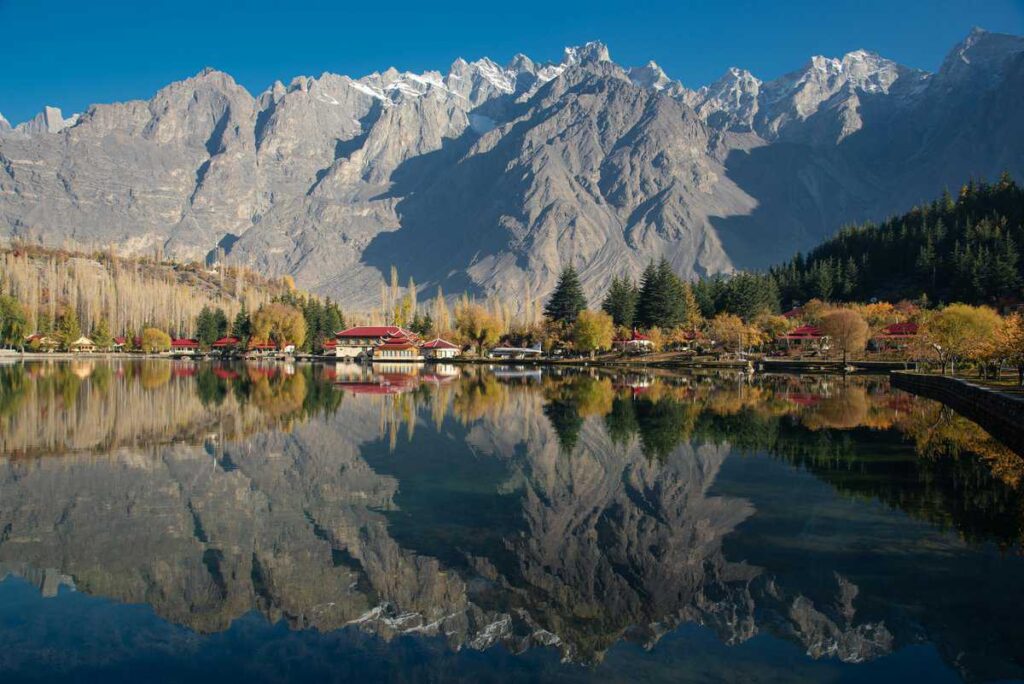
Addressing Specific Safety Concerns
Sexual Assault, Groping, and Harassment
Sexual violence against women in Pakistan is a harsh reality in Pakistan, with an average of 11 reported rapes a day, and less than 3 percent of these cases leading to convictions. The tragic case of Arpi, a foreign traveler who was raped and blackmailed by a man she met on Couchsurfing, shocked many but highlighted a reality that local women face daily.
Is this likely to happen to you as a foreign traveler? No. But pretending it’s not a problem at all insults the millions of Pakistani women who live with this reality every day.
Here’s how to mitigate risks:
- Stay in reputable accommodations. I can’t stress this enough. Don’t experiment with Couchsurfing here—it’s just not worth the risk.
- Avoid unnecessary interactions with strangers. This doesn’t mean being rude, but it does mean being mindful and reserved.
- Always be aware of your surroundings. Trust your gut. If something feels off, don’t worry about being “polite.” Get out of there.
Dealing with Environmental Risks
Pakistan’s landscape is stunning, but it’s also unpredictable. Weather conditions can change rapidly, and environmental risks are real, especially in the northern regions.
Landslides are common in the mountainous areas, particularly during the monsoon season. The Karakoram Highway (KKH) is known for occasional roadblocks due to falling rocks. Authorities usually clear the roads quickly, but delays happen. Check local weather reports before heading out and be prepared for flexible travel plans.
Cities like Lahore and Karachi can reach over 45°C (113°F) during summer. The heat is intense and dehydration is a real risk. Plan activities for early morning or late evening, drink plenty of water, and seek shade or air-conditioning whenever possible.
Driving in Pakistan
Driving in Pakistan is an adventure in itself, and not always in a good way. Traffic rules are more of a suggestion than a law in small cities, and chaos is the norm.
In big cities like Karachi, Lahore, and Islamabad, you’ll see plenty of women drivers. It’s normal, and you won’t attract too much attention. But the more remote and conservative the area, the less likely you are to see women behind the wheel. This lines up with the “conservative areas” list from earlier.
Is Tap Water Safe to Drink?
Tap water in Pakistan is not safe to drink. Contaminants and bacteria are common, and consuming it can lead to severe gastrointestinal issues that will ruin your trip.
Always opt for bottled water and check the seal before drinking. If you’re staying somewhere for a while, consider bringing a portable water filter or using purification tablets.
Petty Theft & Scams
Street theft, scams, and minor crimes are common in crowded urban areas, but they rarely escalate into something more dangerous for foreigners. Let’s be real—foreign travelers are treated differently. The consequences for locals are harsh, which means most people won’t risk it.
Here’s the good news: In the mountain regions, petty theft is practically unheard of. In places like Hunza, people don’t even lock their shops. I’ve left my stuff unattended and come back hours later to find everything untouched. It’s that safe.
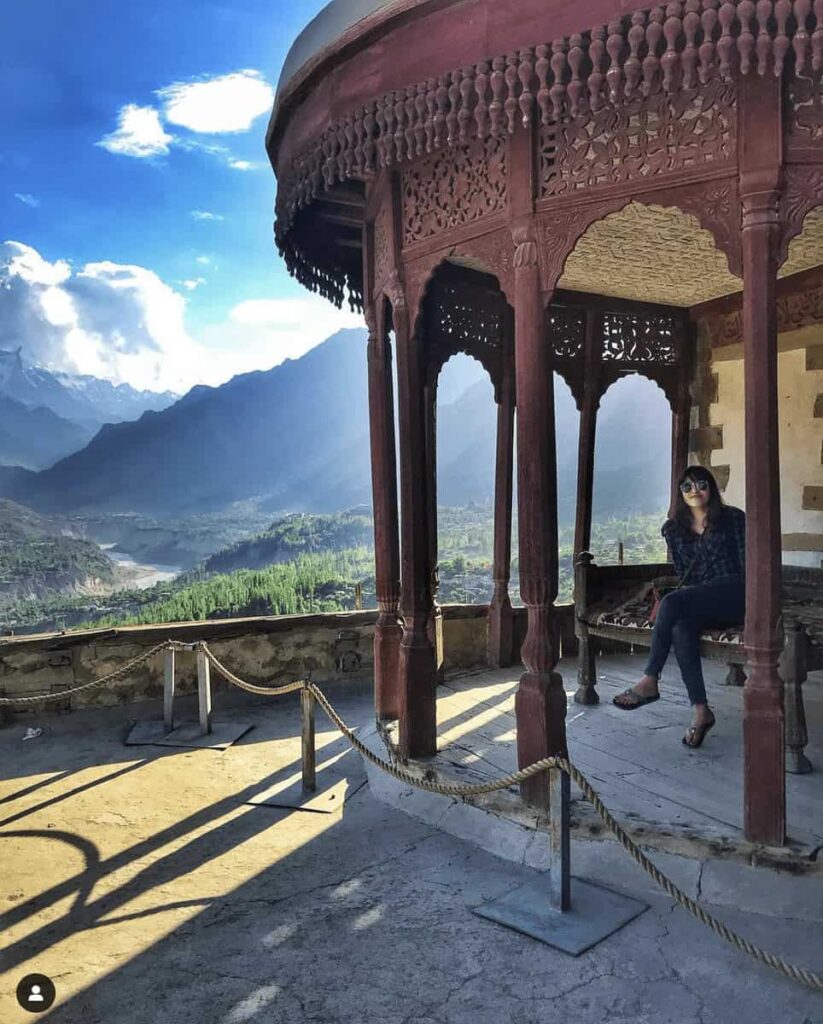
Unexpected Perks: The Benefits of Traveling as a Woman in Pakistan
I know what you’re thinking: I’ve just spent this entire post painting the grimmest possible picture of what it’s like to be a woman in Pakistan, and now I’m trying to convince you to visit? It sounds contradictory, but Pakistan is a country of paradoxes—and being a woman traveler here does comes with some unexpected perks.
VIP Treatment on Public Transport
Public transport in Pakistan is a wild ride, but as a woman, you’ll get the best seats without even asking. Whether it’s the front rows on buses or women-only sections on trains and metros, there’s a cultural expectation to prioritize women’s comfort and safety.
The system is designed to “protect” women from unwanted attention, but it also means you get VIP treatment by default. It’s a byproduct of the patriarchal obsession with a woman’s ‘izzat’ (honour), but I’ll take it.
Women Are Seen as Trustworthy
In Pakistan, women are seen as harmless and trustworthy—to the point where no one questions your intentions. Want to score booze in a country where alcohol is technically illegal? Take a woman with you. No one’s going to suspect a thing. That’s how much ‘izzat’ women carry in this society.
This perception of women as trustworthy and innocent also opens doors to local experiences that men would never get. You’ll be invited into private homes, women-only gatherings, and backroom conversations that are off-limits to men. People will open up to you because they assume you’re non-threatening and genuinely curious, not because you’re trying to pry into their business.
This cultural dynamic is both a privilege and a window into a side of Pakistan that’s usually hidden from outsiders.
Hospitality & Protection from Locals
Pakistani hospitality is overwhelming, but it goes even further for women. Locals feel a deep sense of responsibility and overprotection towards female travelers—especially if you’re a foreigner.
You might be offered free rides, meals, and even accommodation simply because people felt it was their duty to look after you. In Pakistan, a woman traveling alone is seen as someone who needs extra care and protection. It’s a cultural expectation to go out of their way to help you, and they do it with genuine warmth and respect.
This sense of protection can be a double-edged sword. On one hand, it means you’re looked after and even shielded from potential danger. On the other, it can feel restrictive, especially if you’re used to independence and freedom of movement. But once you learn to navigate this dynamic, you’ll realize it’s a reflection of how seriously Pakistanis take hospitality.
A Double-Edged Privilege
Here’s the paradox: As a foreign woman in Pakistan, you’re playing by a different set of rules. You have more freedom—you can wander alone, talk to men without judgment, and skip the chaddar without anyone accusing you of being “immoral.” You’re the outsider, and with that status comes a free pass on cultural expectations that local women could never get away with.
But this freedom is also a privilege that local women don’t have, and you can’t ignore it. I’ve seen this over and over—foreign women raving about how amazing and safe Pakistan is for female travelers while local women navigate an entirely different reality. It’s not that those experiences are false, but they’re one-sided.
This is the part that drives me up the wall—when I see influencers glorifying the experience without acknowledging the inequality that makes it possible. The very cultural norms that protect foreign women are the same ones that restrict local women.
It’s a double-edged sword. You’ll be both protected and restricted, privileged and underestimated, and yes, sometimes adored and scrutinized. That’s Pakistan for you—a country where hospitality and patriarchy go hand in hand, creating a reality that’s complicated, messy, and often contradictory.
But that’s also why it’s so fascinating. The very complexity that makes it challenging is what makes it so unforgettable. And if you’re willing to navigate the contradictions, you’ll leave with a richer, deeper understanding not just of Pakistan, but of how privilege shapes travel.
So, Should You Visit Pakistan?
Despite the challenges, Pakistan is one of the most beautiful places on Earth. You’ll find stunning landscapes, rich history, and unmatched hospitality. But it’s also intensely patriarchal and conservative, and solo female travel isn’t without its challenges. You’ll need to be aware, cautious, and culturally sensitive at every step.
Would I recommend it? Absolutely—but come prepared. This isn’t an easy destination; it’s an adventure that will challenge and change you. If it’s your first time, consider joining a tour group or traveling with friends for a safer, more enjoyable experience.
Ready to explore? Check out my 2-Week Pakistan Itinerary for the best places to visit and practical tips to make the most of your journey. Pakistan is complicated, messy, beautiful, and unforgettable.
Related Posts
- Best Hotels in Lahore: Where to stay Guide from a Local
- A Guide For Planning Your First Trip To Pakistan
- Pakistan Itinerary: A Local’s Guide to 2 Weeks in Pakistan
- 17 Historical Places of Pakistan: Lost Temples, and Epic Forts
- 17 Cool Things to Do in Islamabad: A Local’s Guide
- Is Pakistan Safe for Women to Travel (An Honest, No-BS Guide)
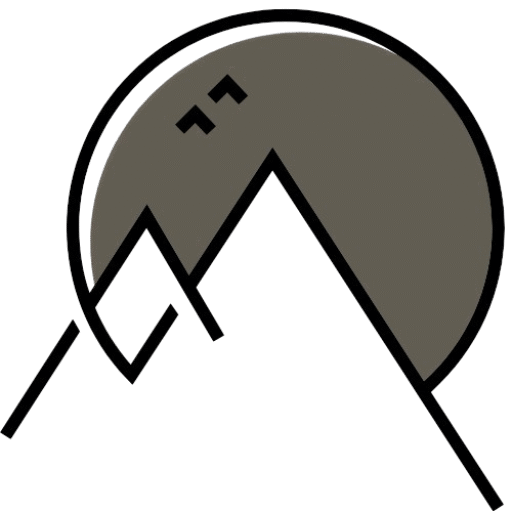
Thank you for this post! This has been something that has been nagging at me and I have been doing my own research and reading on the patriarch and colourism in Pakistan leading up to my trip to Pakistan (I am a Pakistani woman). With the surge of travellers to Pakistan and stories being shared widely (mostly from White men and women) through social media it fails to depict the complex issues within Pakistani society. There is absolute preferential treatment towards white/foreign women in comparison to Pakistani women. I will be travelling to Pakistan but I will be making sure to take precautions to keep my partner and I safe and comfortable.
Thank you for sharing this, it really means a lot that you liked it! 🙂 I completely agree with you, and honestly, this gap in the narrative is part of why I wrote the post in the first place. The contrast in how foreign vs. Pakistani women are treated is real, and it deserves more attention.
Wishing you a safe trip and if you ever feel like sharing how it went, I’d genuinely love to hear about it.